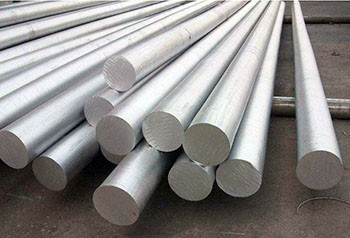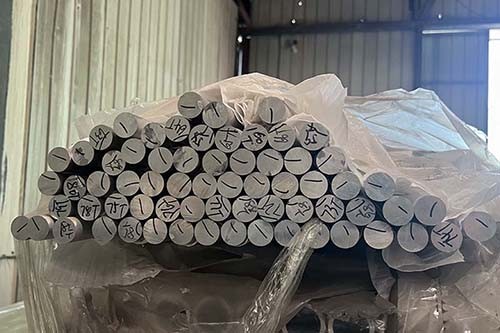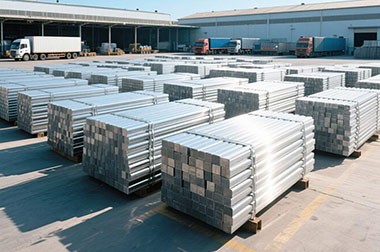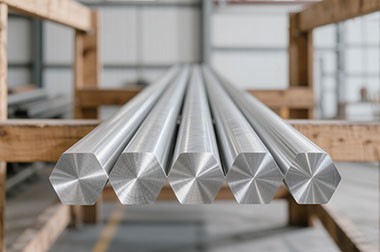5456 H116 Aluminum
5456 aluminum alloy is a high-strength aluminum alloy widely used in marine, shipbuilding, offshore engineering, and other corrosion-resistant structural components. It has excellent seawater corrosion resistance, making it especially suitable for use in marine environments. The H116 temper is 5456 aluminum alloy that has undergone special heat treatment processes (such as low-temperature aging) to improve its corrosion resistance and strength, making it particularly suitable for marine environments that require higher strength.
5456 H116 aluminum alloy is a high-performance material, particularly suitable for use in marine environments and other harsh conditions. Its commonly used thickness ranges from 3/16 inch to 1.5 inches, offering excellent corrosion resistance, moderate strength, and good workability. It is widely used in shipbuilding and marine engineering, especially for hull structures, deck systems, and superstructures.
Compared to other marine aluminum alloys, 5456 H116 offers superior corrosion resistance and better adaptability to marine environments. In addition, it is also widely used in industries such as construction, automotive, pressure vessels, military, and energy. Whether in marine applications or other industries, 5456 H116 aluminum alloy demonstrates outstanding performance and reliability.
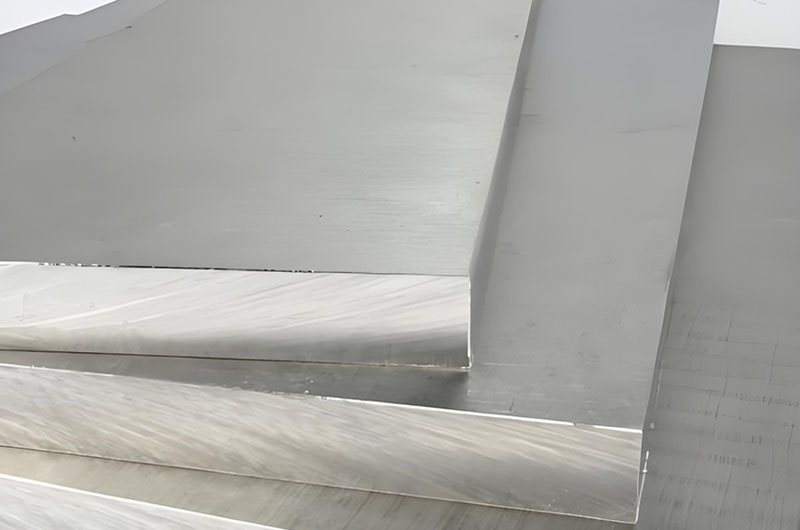
5456 aluminum alloy belongs to the 5000 series aluminum-magnesium alloys. In the European standard, it is referred to as EN AW-5456 or Al Mg 5 Mn 1, with the UNS number A95456. The H116 temper indicates a special thermal treatment that enhances its resistance to exfoliation and intergranular corrosion, especially in marine environments.
H116 is a temper designation for aluminum alloys, specifically suited for 5xxx series alloys with magnesium content of 3% or higher. Compared to other H-series tempers, H116 has the following characteristics:
- Cold working and stabilization treatment: The H116 temper is achieved through cold working (strain hardening) to reach a specified stabilized tensile strength limit and undergoes a specific stabilization process.
- Enhanced corrosion resistance: A key feature of the H116 temper is that it meets specific requirements for intergranular and exfoliation corrosion resistance, which are verified through accelerated corrosion testing.
- Suitable for specific temperature ranges: Aluminum alloys in the H116 temper are suitable for continuous service environments with temperatures not exceeding 66°C (150°F).
- Applicable to high magnesium content alloys: The H116 temper is specifically designed for 5xxx series alloys with high magnesium content, such as 5083, 5086, and 5456.
The H116 temper has similar mechanical properties to the H321 temper, but it includes additional requirements for corrosion resistance, making it especially suitable for marine environments and other high-corrosion-risk applications.
Common Thickness Specifications of 5456 H116 Aluminum Plate
| Description | Form |
| 5456-H116 Aluminum Sheet 0.125" | Sheet |
| 5456-H116 Aluminum Sheet 0.156" | Sheet |
| 5456-H116 Aluminum Sheet 0.190" | Sheet |
| 5456-H116 Aluminum Plate 0.250" | Plate |
| 5456-H116 Aluminum Plate 0.313" | Plate |
| 5456-H116 Aluminum Plate 0.375" | Plate |
| 5456-H116 Aluminum Plate 0.500" | Plate |
| 5456-H116 Aluminum Plate 0.625" | Plate |
| 5456-H116 Aluminum Plate 0.750" | Plate |
| 5456-H116 Aluminum Plate 1.250" | Plate |
| 5456-H116 Aluminum Plate 1.500" | Plate |
Corrosion Resistance of 5456 H116 Aluminum
5456 H116 aluminum alloy offers excellent corrosion resistance, particularly in marine environments:
- Seawater corrosion resistance: 5456 H116 exhibits extremely high resistance to seawater and salt spray, making it ideal for marine applications. Its high magnesium content (around 5%) forms a dense oxide film that effectively prevents further corrosion.
- Stress corrosion cracking resistance: After H116 thermal treatment, this alloy has good resistance to stress corrosion cracking, which is a crucial property in marine environments. Studies have shown that 5456 H116 exhibits a very low corrosion rate and good structural stability under long-term exposure to marine conditions.
- Intergranular corrosion resistance: The H116 treatment process gives the alloy a specified level of intergranular and exfoliation corrosion resistance, extending its service life in harsh environments.
- Compatibility with other materials: 5456 H116 is compatible with most materials used in marine environments, reducing the risk of galvanic corrosion.
This alloy is widely used in shipbuilding, especially in parts exposed to seawater and salt spray for extended periods, such as hulls, decks, and offshore facilities.
Effects of H116 Temper on 5456 Aluminum Alloy Properties
The H116 temper significantly affects the properties of 5456 aluminum alloy in the following aspects:
- Strength enhancement: The H116 temper, achieved through cold working and stabilization treatment, significantly increases the strength of 5456 aluminum alloy.
- Improved corrosion resistance: The H116 temper process and quality control greatly enhance the corrosion resistance of 5456 aluminum, especially its resistance to exfoliation and intergranular corrosion in marine environments.
- Optimized grain structure: The H116 temper requires the alloy to have a specific grain structure that reduces continuous grain boundary networks, thereby improving overall corrosion resistance.
- Temperature limitation: 5456 aluminum in the H116 temper is suitable for environments not exceeding 66°C, as higher temperatures may affect the microstructural stability induced by cold working.
- Change in workability: 5456 aluminum alloy in the H116 temper is more difficult to process than in the annealed (O) temper, but easier to form than in fully hardened tempers.
Surface Treatment Processes for 5456 H116 Aluminum
To further enhance the performance and service life of 5456-H116 aluminum alloy, appropriate surface treatments are typically applied:
- Anodizing: An electrochemical process that forms a protective oxide film on the aluminum surface, improving corrosion resistance and surface hardness.
- Spray coating: Spraying forms a protective layer on the surface of 5456 aluminum, enhancing its resistance to corrosion and wear.
- Anti-corrosion coating: Applying anti-corrosion coatings to exposed 5456 aluminum surfaces protects them from oxidation, corrosion, and chemical attacks.
- Ceramic coating: Ceramic coatings provide higher hardness and wear resistance, suitable for applications with high abrasion and friction demands.
- Sandblasting: Using high-pressure air to spray abrasive particles onto the 5456 aluminum surface removes the oxide layer, increases surface roughness, and improves adhesion.
- Polishing: Polishing smooths and brightens the surface of 5456 aluminum, enhancing its visual appearance and making it suitable for products requiring a high aesthetic finish.
5456 H116 Aluminum Chemical Composition
| Alloy | 5456 | |
| Si | ≦0.25 | |
| Fe | ≦0.4 | |
| Cu | ≦0.1 | |
| Mn | 0.50-1.0 | |
| Mg | 4.70-5.50 | |
| Cr | 0.05-0.20 | |
| Zn | ≦0.25 | |
| Ti | ≦0.2 | |
| Zr | - | |
| Standard | EN573 | ASTM B928 |
Physical Properties of 5456 H116 Aluminum
| Property | Value | Unit |
| Density | 2.70 | g/cm³ |
| Melting Point | 605-650 | °C |
| Elastic Modulus | 70, 000 | MPa |
| Poisson’s Ratio | 0.33 | - |
| Coefficient of Thermal Expansion (20°C) | 23.6 | 10⁻⁶/°C |
| Thermal Conductivity (25°C) | 116 | W/m·K |
| Electrical Conductivity | 32% IACS | - |
Thermal Performance Characteristics
The thermal conductivity of 5456 aluminum alloy is 116 W/m·K, which means it has good heat dissipation capabilities and can maintain stable performance in environments with large temperature variations. Its coefficient of thermal expansion is 23.6×10⁻⁶/°C, which is similar to other aluminum alloys, making 5456 aluminum alloy components compatible with other materials during temperature changes.
The alloy’s melting point range is between 605-650°C, which is a critical factor to monitor during casting and heat treatment processes to ensure the desired microstructure and performance are achieved. Additionally, the electrical conductivity of 5456 aluminum alloy is 32% IACS. Although this is lower than pure aluminum, it still maintains good electrical conductivity in its alloyed form.
Mechanical Properties of 5456 H116
| Property | Value | Unit |
| Tensile Strength | 285-350 | MPa |
| Yield Strength (0.2% offset) | 200-255 | MPa |
| Elongation (50mm gauge length) | 10-12 | % |
| Hardness (Brinell) | 90 | HB |
| Shear Strength | 200-210 | MPa |
These mechanical property data show that 5456 aluminum alloy in the H116 temper has high strength and good ductility, allowing it to withstand large loads without brittle fracture. Compared to other aluminum alloys, 5456 exhibits higher strength, especially in terms of yield strength, making it highly suitable for structural applications that require high load-bearing capacity.
Unique Advantages of 5456 H116 Compared to Other Marine-Grade Aluminum Alloys
Compared to other commonly used marine-grade aluminum alloys, 5456 H116 offers the following unique advantages:
- Outstanding Corrosion Resistance: Compared to commonly used marine aluminum alloys such as 5083 and 5052, 5456 H116 exhibits higher corrosion resistance in marine environments, especially under salt spray and seawater immersion conditions.
- High Strength-to-Weight Ratio: 5456 H116 offers an excellent strength-to-weight ratio, being lighter than many other marine aluminum alloys while offering equal or greater strength.
- Fatigue Resistance: This alloy has good fatigue resistance, making it suitable for ship structures that are subject to long-term dynamic loads.
- Weldability: While welding of all aluminum alloys requires special considerations, 5456 H116 can achieve good weld joint performance with appropriate welding techniques and filler materials.
- Workability: Compared to some high-strength aluminum alloys, 5456 H116 has better cold workability, making it easier to form and process.
- Cost Effectiveness: Although the initial cost may be higher than some common aluminum alloys, due to its excellent corrosion resistance and longer service life, 5456 H116 offers greater cost efficiency over its entire lifecycle.
Compared to 5083, the main advantages of 5456 H116 are its higher corrosion resistance and better workability; while compared to 6061, its advantages lie in superior corrosion resistance and better adaptability to marine environments.
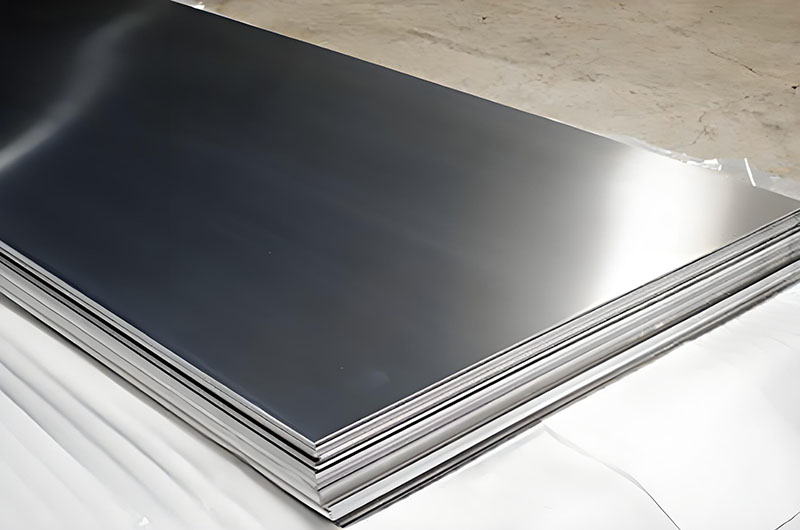
5456 H116 Aluminum Characteristics
Corrosion Resistance
The main advantage of 5456 H116 aluminum alloy is its excellent seawater corrosion resistance, particularly in marine environments, where it effectively resists corrosion phenomena such as intergranular corrosion and exfoliation corrosion. This makes it widely used in shipbuilding, offshore platforms, and marine engineering equipment.
High Strength
Compared to H111 and H112 tempers, the H116 temper of 5456 aluminum alloy has higher strength, making it suitable for structural applications that require higher strength. This high strength allows H116 aluminum alloy to maintain stability even under harsh marine environmental conditions.
Good Weldability
5456 H116 aluminum alloy has good weldability, making it particularly suitable for large components that require welding, such as ship structures and offshore platforms. It is less likely to experience cracking or degradation of properties in the heat-affected zone during welding.
High Temperature Resistance
Although the H116 temper primarily focuses on corrosion resistance, it also maintains some stability at higher temperatures, making it suitable for certain high-temperature environments.
Strong Adaptability
This aluminum alloy is adaptable to various marine environments, including salt spray corrosion in coastal areas, underwater equipment, offshore platforms, and ship structures, providing long-term stable performance.
5456 H116 aluminum is a versatile, high-performance alloy designed for demanding environments. Its balanced properties make it an indispensable material in the marine and aerospace industries, offering strength, corrosion resistance, and weldability that outperform many alternatives.
Applications of 5456 H116 Aluminum in Marine Fields
5456 H116 aluminum alloy is widely and importantly used in marine and shipbuilding industries:
- Hull Structures: Used as a primary material for hull structures, especially in areas requiring high strength and corrosion resistance. 30mm thick 5456-H116 plates are often applied in critical hull components.
- Deck Systems: Extensively used in ship decks, including main decks, superstructure decks, and working decks. Its corrosion resistance and moderate strength make it ideal for this application.
- Ship Superstructures: Used for building ship superstructures, such as wheelhouses and crew accommodations. Its lightweight characteristics help reduce overall ship weight and improve fuel efficiency.
- Offshore Platforms: Applied in offshore drilling platforms and other marine engineering structures for components such as support frames (non-high-strength), work platforms, and guardrails.
- Internal Ship Structures: Used in internal partitions, floors, and ceilings of ships, offering good strength and corrosion resistance.
- Special Vessels: Widely used in high-speed vessels, yachts, and other specialty boats due to its high strength-to-weight ratio and excellent corrosion resistance.
In shipbuilding, 5456 H116 is commonly used in plate form, with thickness ranging from 0.2mm to 350mm depending on the application. The H116 temper is especially suited for applications requiring long-term structural integrity in marine environments.
Welding of 5456 H116 Aluminum
When welding 5456 H116 aluminum alloy, selecting the appropriate welding materials is crucial to ensure high-quality weld joints:
Filler Metal Selection
Typically, 5356 or 5183 aluminum alloy welding wires are used as filler materials, which are well compatible with 5456 base metal.
Shielding Gas
Argon gas is usually used during welding as a shielding gas to prevent oxidation and other welding defects.
Welding Processes
Suitable welding processes for 5456 H116 include Tungsten Inert Gas (TIG), Metal Inert Gas (MIG), and laser welding. Among them, laser welding has proven effective in producing high-quality butt joints without filler metal on 0.5-inch (12.7mm) thick 5456 H116 plates.
Preheating and Post-heating
For thicker plates, appropriate preheating and post-weld heat treatment may be required to reduce welding stress and prevent cracking.
Welding Parameters
Welding parameters should be optimized based on plate thickness, joint configuration, and welding position. For example, in laser welding of 5456 H116, a typical power range is 2–4 kW with welding speeds of 1–3 m/min.
Post-Weld Treatment
After welding, appropriate surface and protective treatments may be necessary to restore corrosion resistance in the welded areas.
Other Key Applications of 5456 Aluminum
In addition to the primary applications mentioned above, 5456-H116 aluminum alloy is also widely used in several other fields:
Pressure Vessels and Piping Systems
Liquefied natural gas (LNG) tanks: thanks to its cryogenic and corrosion resistance properties
Chemical and food processing equipment: suitable for corrosive environments
High-pressure gas and liquid transport pipelines: especially in harsh conditions
Military and Defense
Armor plates and military vehicle components: for its lightweight and protective qualities
Military facilities and shelters: for use in coastal and humid environments
Naval ships and coast guard vessels: used for both main hull structures and internal fittings
Construction Industry
Roofing and exterior wall systems: taking advantage of its corrosion resistance and aesthetics
Structural components: such as supports, frames, and decorative elements
Curtain wall systems: especially in coastal buildings
Automotive and Transportation
Truck and trailer structural parts: for its high strength and lightweight properties
Interior trim and structural parts for public transportation: such as subways, light rail, and intercity buses
Specialty vehicles: including refrigerated trucks and others requiring corrosion resistance
Aerospace
Non-load-bearing structures and interior components: for specific aerospace applications
Ground support equipment: leveraging its corrosion resistance and high strength
Energy Industry
Offshore wind turbine structures: benefiting from its marine corrosion resistance
Oil and gas platform equipment: such as piping, tanks, and structures
Solar and other renewable energy systems: such as supports and frames
Application Selection Guide for 5456-H116 Aluminum Alloy
Based on the properties of 5456-H116 aluminum alloy, here are some application selection suggestions:
Suitable Applications
- Marine vessels and offshore engineering structures in ocean environments
- High-pressure gas and liquid storage containers
- Architectural structures requiring high strength and corrosion resistance
- Equipment and containers for cryogenic environments
- Military and aerospace applications
Unsuitable Applications
- Continuous operating environments above 66°C
- Applications highly sensitive to cost
- Small parts requiring complex shapes and high-precision machining
- Applications demanding high heat resistance
Advantages and Disadvantages of 5456-H116 Aluminum Alloy
Major Advantages
- High strength (tensile strength 340–350 MPa)
- Excellent corrosion resistance (especially in marine environments)
- Good weldability
- Lightweight and high strength (density 2.70 g/cm³)
- Good machinability
- Good low-temperature performance
- 100% recyclability
Limitations
- Relatively high production cost
- More difficult to machine (in H116 condition)
- Temperature limitation (≤66°C)
- Non-heat-treatable alloy
- Susceptibility to intergranular corrosion
- Risk of stress corrosion cracking
- Processing challenges due to high magnesium content
More Information about 5456 Aluminum
Performance Variations of 5456 Aluminum in Different Tempers
The mechanical properties of 5456 aluminum alloy vary significantly under different heat treatment conditions:
| Temper | Tensile Strength (MPa) | Yield Strength (MPa) | Elongation (%) |
| O (Annealed) | 280–310 | 160–165 | 16–20 |
| H111 | 315–325 | 220–230 | 12–15 |
| H112 | 290–310 | 165–175 | 12–14 |
| H116 / H321 | 340–350 | 245–255 | 10–12 |
From the table above, it can be seen that 5456 aluminum alloy can achieve higher strength through cold working and stabilization treatment, though at the expense of some ductility. The H116 temper is one of the most commonly used states of 5456 aluminum, providing a good balance between strength and corrosion resistance.
Temperature Effects on 5456 H116 Performance
The mechanical properties of 5456 aluminum alloy are significantly affected by temperature. At high temperatures, its strength decreases, while at low temperatures, its strength increases, although ductility may decrease.
5456 aluminum alloy in the H116 temper is suitable for continuous operating environments not exceeding 66°C (150°F). Within this temperature range, the alloy can maintain its mechanical performance and corrosion resistance, ensuring long-term reliable use. For applications at higher temperatures, other alloys or tempers may need to be considered.
Differences Between H116 and Other H-Series Tempers
The H116 temper differs significantly from other common H-series tempers (such as H32, H321), mainly in the following aspects:
| Temper | Processing Method | Performance Features | Application Differences |
| H32 | Cold working + partial annealing | Medium strength, general corrosion resistance | General structural applications |
| H321 | Cold working + stabilization treatment | High strength, good corrosion resistance | Structural applications with higher requirements |
| H116 | Cold working + stabilization treatment + strict corrosion testing | High strength, excellent corrosion resistance | Marine environments and high-corrosion-risk applications |
The mechanical properties of H116 and H321 tempers are nearly identical, but the H116 temper includes strict requirements for intergranular corrosion and exfoliation corrosion. This means that alloys in the H116 temper require additional quality control and testing during manufacturing to ensure they meet corrosion resistance standards.
Comparison Between 5456 Aluminum Alloy and Similar Alloys
Comparison of 5456 and 5083 Aluminum Alloys
5083 aluminum alloy is one of the main competitors to 5456, and both are used in many overlapping applications. The following are their key differences:
| Characteristic | 5456 Aluminum Alloy | 5083 Aluminum Alloy |
| Magnesium Content (%) | 4.7–5.5 | 4.0–4.9 |
| Manganese Content (%) | 0.5–1.0 | 0.4–1.0 |
| Tensile Strength (MPa) | 340–350 (H116) | 290–315 (H116) |
| Yield Strength (MPa) | 245–255 (H116) | 195–215 (H116) |
| Elongation (%) | 10–12 (H116) | 12–15 (H116) |
| Main Advantages | Higher strength, better weldability | Better corrosion resistance, lower cost |
| Main Applications | High-strength structures, pressure vessels, marine use | Ship structures, pressure vessels, cryogenic equipment |
Comparison Between 5456 and 5086 Aluminum Alloys
5086 aluminum alloy is another commonly used alloy in the 5xxx series and is similar to 5456 aluminum alloy in many aspects:
| Characteristic | 5456 Aluminum Alloy | 5086 Aluminum Alloy |
| Magnesium Content (%) | 4.7–5.5 | 3.5–4.5 |
| Manganese Content (%) | 0.5–1.0 | 0.2–0.7 |
| Tensile Strength (MPa) | 340–350 (H116) | 275–295 (H116) |
| Yield Strength (MPa) | 245–255 (H116) | 170–190 (H116) |
| Elongation (%) | 10–12 (H116) | 12–15 (H116) |
| Main Advantages | Higher strength, better weldability | Better formability, lower cost |
| Main Applications | High-strength structures, pressure vessels, marine use | Marine structures, pressure vessels, general structural components |
Comparison Between 5456 and 5052 Aluminum Alloys
5052 aluminum alloy is a commonly used medium-strength alloy, and compared to 5456 aluminum alloy, it has the following characteristics:
| Characteristic | 5456 Aluminum Alloy | 5052 Aluminum Alloy |
| Magnesium Content (%) | 4.7–5.5 | 2.2–2.8 |
| Manganese Content (%) | 0.5–1.0 | ≤0.10 |
| Tensile Strength (MPa) | 340–350 (H116) | 215–235 (H32) |
| Yield Strength (MPa) | 245–255 (H116) | 185–205 (H32) |
| Elongation (%) | 10–12 (H116) | 12–15 (H32) |
| Main Advantages | Higher strength, better corrosion resistance | Better formability, lower cost |
| Main Applications | High-strength structures, pressure vessels, marine use | General structural components, automotive parts, architectural decoration |
5456 H116 aluminum is a strong and versatile alloy that is highly suitable for demanding applications requiring high strength, corrosion resistance, and weldability—especially in the marine and defense industries.
5456 H116 aluminum alloy, with its excellent corrosion resistance, high strength, and good weldability, is a key material in the marine and shipbuilding industries. Its specialized heat treatment state ensures long-term stability in seawater corrosion and salt mist environments, making it crucial for applications in offshore platforms, ship structures, and corrosion-resistant equipment.
Recommended for you
-
5456 marine grade aluminum plate is an economical choice for ship construction. Can be used on baseboards, decks and other upper fittings.
-
5456-H111 aluminum alloy is commonly used in the marine and shipbuilding industries, particularly in environments that require resistance to seawater corrosion.
-
5456-H112 aluminum alloy is a cold-processed and heat-treated aluminum alloy, primarily used in fields that require high corrosion resistance and moderate strength, such as the marine and shipbuilding industries.
-
5456 H32 aluminum alloy is widely used in the marine and shipbuilding industries. It has good corrosion resistance and is suitable for anti-corrosion structural components in seawater environments.
-
5456 H321 aluminum alloy is a high-strength aluminum alloy primarily used in the marine and shipbuilding industries, especially for corrosion-resistant structures in seawater environments.
-
5456 O aluminum alloy is a state of the 5456 series, referring to the aluminum alloy that has been fully annealed (O state).
Other content readers are interested in
-
5456 5454 5754 Marine Grade Aluminum Bar
5456 5454 5754 Marine Grade Aluminum Bar has certification from CCS, DNV, NK, CCS, ABS, BV, LR, KR and other classification societies, and its quality fully complies with world marine grade standards.
-
Marine Grade Aluminum Round Bar 5754 5454 5456
The quality of 5754, 5456, and 5454 marine-grade aluminum round bars fully meets the ship classification standards worldwide: CCS, DNV, NK, ABS, BV, LR, KR.
-
5456 5454 5754 Marine Grade Aluminum Square Bars
As outstanding representatives of the Al-Mg series alloys, 5456, 5454, and 5754 marine-grade aluminum square bars each have unique performance advantages and application scenarios.
-
5454 5456 5754 Marine Grade Hexagonal Aluminum Bar
Haomei Aluminum is one of the leading 5454, 5456, 5754 aluminum hexagonal bar manufacturers in China, focusing on the research and development and production of high-quality products.
Recommended for you
-
5052 marine aluminum alloy is a high-strength, corrosion-resistant, easy-to-process and weld aluminum alloy, which is widely used in the manufacture of ships and marine structures.
-
5083 is basically used to manufacture ship hulls because of its relatively high strength and good corrosion resistance.
-
5059 aluminum is both a high-magnesium and high-zinc alloy, offering excellent corrosion resistance and fire resistance.
-
5086 aluminum alloy is irreplaceable in hull and deck applications in marine operating environments due to its unique seawater corrosion resistance, excellent low-temperature toughness, and good weldability.
-
5383 aluminum offers excellent fatigue resistance and crack resistance, and its unique properties make it irreplaceable in the design of high-speed vessels and marine structures that require long-term fatigue resistance.
-
5456 aluminum, with its unique high strength, exceptional fatigue resistance, and resistance to stress corrosion cracking, is irreplaceable in heavy-duty hull structures.
-
5754 aluminum is a medium-to-high strength alloy with excellent weldability, a low tendency for welding cracks, and high strength in both the weld joint and the crystalline metal.
More content of interest to readers
5456 Aluminum Properties 5383-O Aluminum vs. 5456-O Aluminum 5383-H32 Aluminum vs. 5456-H32 Aluminum 5383-H111 Aluminum vs. 5456-H111 Aluminum 5383 Aluminum vs. 5456 Aluminum 5383-H112 Aluminum vs. 5456-H112 Aluminum 5456-H116 Aluminum vs. 5456-H32 Aluminum 5086 Aluminum vs. 5456 Aluminum 5456-H112 Aluminum vs. 5456-H116 Aluminum 5456-H111 Aluminum vs. 5456-H116 Aluminum The application of 5456 aluminum plate in shipbuilding
You might be interested in: Marine Aluminum 5456 5 Series Marine Aluminum

